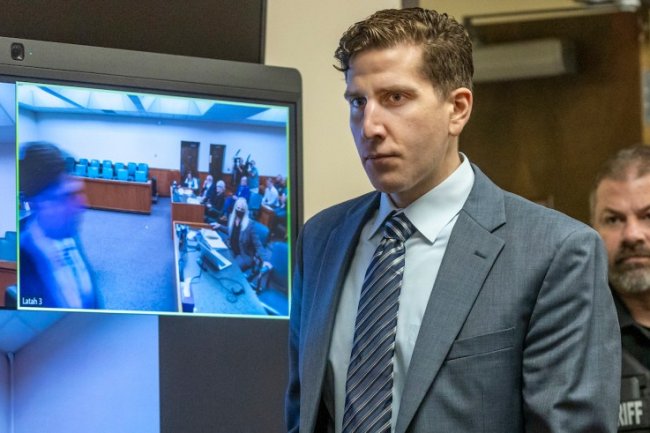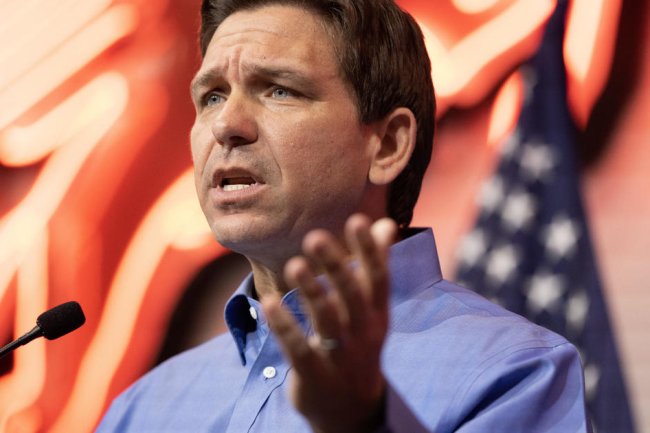How Adm. Samuel Paparo Can Revitalize the Navy
By Seth Cropsey June 13, 2023 6:49 pm ET U.S. Pacific Fleet Commander Adm. Samuel Paparo holds a press meeting in Washington, April 4, 2022. Photo: Yonhap News/Zuma Press It came as a surprise when Defense Secretary Lloyd Austin recommended that President Biden name Adm. Samuel Paparo, commander of the U.S. Pacific Fleet, as chief of naval operations. The nod was expected to go to Adm. Lisa Franchetti, the vice chief. Adm. Paparo is a commendable choice. He understands the threat China poses to U.S. pre-eminence in the Pacific. “A pacing threat” was how he described China in a 2021 speech to the U.S. Naval Institute and the Armed Forces Communications and Electronics Association. If he is appointed, he will face a uniquely difficult strategic environment. China’s ar

By
Seth Cropsey

U.S. Pacific Fleet Commander Adm. Samuel Paparo holds a press meeting in Washington, April 4, 2022.
Photo: Yonhap News/Zuma Press
It came as a surprise when Defense Secretary Lloyd Austin recommended that President Biden name Adm. Samuel Paparo, commander of the U.S. Pacific Fleet, as chief of naval operations. The nod was expected to go to Adm. Lisa Franchetti, the vice chief.
Adm. Paparo is a commendable choice. He understands the threat China poses to U.S. pre-eminence in the Pacific. “A pacing threat” was how he described China in a 2021 speech to the U.S. Naval Institute and the Armed Forces Communications and Electronics Association.
If he is appointed, he will face a uniquely difficult strategic environment. China’s army is preparing for a major war, European security still hangs in the balance as Russia seeks to swallow Ukraine, and Iran threatens to overturn the Middle Eastern balance. Domestically, a centralized Pentagon remains committed to transformation with no future vision, the services fight for Indo-Pacific roles absent a strategy, Congress views the Navy as strategically recalcitrant, and partisan politics threaten defense spending.
Charting a course forward requires four steps from the new chief of naval operations:
• Develop a coherent maritime strategy. The Navy has lacked one for 40 years. Its last successful strategy, formulated in 1982, was framed in terms of the threat from the Soviet Union. The explicit linkage between threat and capabilities ensured the Navy’s ability to identify its role in national defense and defend its budgets and force structure.
A new maritime strategy should begin with the reality of Eurasian competition and recognize three overlapping threats: China, Russia and Iran. It needs to articulate the Navy’s role in containing all three threats, both through deterrence and, in the event of combat, by keeping sea lines of communication open and deploying combat power to the Eurasian rimland, particularly the Indo-Pacific.
The chief’s engagement in strategic development is critical. Delegation to subordinates would kill the enterprise. Each military service needs an advocate—particularly the sea services given the Pentagon’s landward bureaucracy. Gen. David Berger, commandant of the Marine Corps, recognizes this and has crafted a strategic concept he can defend. The Navy should follow his example.
The future of naval combat as a concept is too complex to understand absent serious long-term reflection and intensive war gaming. The new chief of naval operations would benefit from creating a Project Solarium-style set of high-level assessment exercises that would include naval leadership, senior commanders and expert civilians. These would ensure that the Navy has the intellectual heft to contend with the Pentagon bureaucracy.
• Freeze ship retirements. Any strategic concept the chief develops will require more ships than are currently in the fleet. Budgetary pressures and simple shipyard constraints complicate this.
Submarines in particular must be kept in service. They will be the primary offensive implement against China’s reconnaissance-strike network, the key to allowing more-detectable U.S. assets to apply their combat power. But the U.S. Navy’s attack-submarine fleet is around a quarter to a third understrength because of maintenance and repair backlogs. In this state, it is unacceptable for the Navy to retire more submarines than it builds, as it plans to do until the early 2030s, when the Virginia-class pipeline begins to grow the fleet after Los Angeles-class retirements.
The new chief of operations should ensure that every ship has a role—even those less than fit for modern high-end combat, particularly the Littoral Combat Ship, which can be used for presence missions, those whose purpose is to show the flag and demonstrate the ability to project power. The fast Independence-class LCSs could deploy forces within areas where China has the ability to discern and strike targets.
• Take his case to Congress. The Navy still has bipartisan allies in the House and Senate Armed Services committees. Congressional hostility to the Navy stems from the service’s inability to articulate a strategic concept and provide a matching budget request, not from legislative aversion to a strong Navy. If the new chief of operations can make the case for a larger fleet and more funding derived from a clear strategic concept and maritime strategy, he may not find support in the Biden administration, but he will level the ground for future congressional beneficence.
• Support a major recapitalization of the defense and maritime industrial base. This should include advocacy of public-private partnerships that create new repair facilities and expanded long-term munitions contracts to ensure a weapons pipeline for the Navy and the military more broadly. It requires significant pressure on the Transportation Department and the U.S. Maritime Administration to fulfill their responsibilities as advocates of American sea power. A strong chief of naval operations can force these measures.
While Ukraine’s experience reminds us that the Navy will take damage during a major war, many attacks against ships won’t destroy them. Absent enough repair facilities, limited damage becomes a de facto mission kill for months or years. The only way to ensure a repair system is by supporting a dual-use maritime industrial base. The chief of operations should be the military voice of the effort.
History is an uninterrupted repetition of peace followed by war. Deterring another major war, one fought over dominance in Eurasia, ought to be American statesmen’s first goal. This can’t be accomplished without naval supremacy. A strong chief of naval operations is essential to the maritime defense that the U.S. requires by virtue of its geography, strategy and interest in international order. Let’s hope that Adm. Paparo makes the changes that American security needs.
Mr. Cropsey is founder and president of the Yorktown Institute. He served as a naval officer and as deputy undersecretary of the Navy and is author of “Mayday” and “Seablindness.”
What's Your Reaction?

















